44 how to read nutrition food labels
How To Read Nutrition Food Labels And Eat Healthy - Scripps Health Knowing how to read nutrition labels on food packages can help you make healthy eating choices. Recent changes to the "Nutrition Facts" label have made it easier to read and use. In 2016, the Food and Drug Administration (FDA) updated the Nutrition Facts label with new dietary information and design features. Though many food manufacturers ... How to Understand and Use the Nutrition Facts Label | FDA - U.S. Food ... For certain products that are larger than a single serving but that could be consumed in one sitting or multiple sittings, manufacturers will have to provide "dual column" labels to indicate the...
How to Read Food Labels: Your Complete Consumer Guide Details included on food labels are the nutritional composition of a food, as well as ingredients and their relative amounts. When relevant, they may also indicate important details about the food's quality, origin, processing, and method of preservation. With this information, the theory goes, you can make intentional decisions about what to buy.
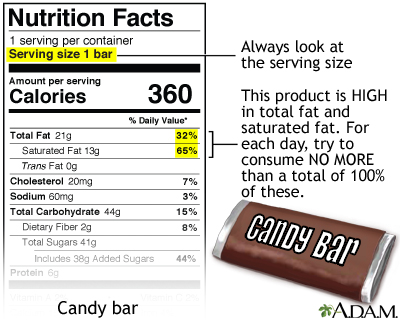
How to read nutrition food labels
How To Read A Food Nutrition Label: The Basics | Gobble To learn how to read food nutrition labels, start at the top with serving size. Serving Information The serving size is the amount of specific food or drink you should consume in one sitting. This number is usually the first thing listed on the nutrition label because it provides important context for everything else. Food labels - NHS Most pre-packed foods have a nutrition label on the back or side of the packaging. These labels include information on energy in kilojoules (kJ) and kilocalories (kcal), usually referred to as calories. They also include information on fat, saturates (saturated fat), carbohydrate, sugars, protein and salt. PDF How to Read the Food Label - University of California, Santa Cruz Look for low- sodium foods with less than 140 mg per serving. Track the total amount you eat. Fiber. Aim for 25 to 38 grams of fiber per day. Sugars: Limit added sugars. Some vitamins and minerals may be listed with DV in one serving. Percent Daily Values (DV) tell you how much you should be eating based on a 2,000 or 2,500 calorie diet.
How to read nutrition food labels. How to Read Food Nutrition Labels - Maine SNAP-Ed Use the Nutrition Facts label and ingredients list to limit foods and beverages that are high in sodium, saturated fat, and added sugars. Watch out for added sugars! Sugar has many different names, especially on an ingredient list. Look out for words like: High fructose corn syrup Words ending in "ose" such as Dextrose Fructose Galactose Glucose Understanding Food Labels | The Nutrition Source | Harvard T.H. Chan ... The percent Daily Value (%DV) shows how much of a nutrient in one serving of food contributes to one's approximate daily requirement for the nutrient. To best use the %DV, remember these simple guidelines: 5% DV or less of a nutrient per serving is considered low. PDF MOVE! Nutrition Handout N10: How to Read a Nutrition Facts Label size" is the official term used on food labels. Nutrition facts given on the food label are based on one serving. Be sure to look at the number of servings in the container. Even small containers may have more than one serving. If you eat the whole container, then you must multiply the nutrition values by the number of servings in the ... 3 Ways to Read Nutrition Facts on Food Labels - wikiHow Life To interpret what the daily values and percentages actually refer to, start by checking the serving size listed at the top of the label. This number will help you figure out how much sugar, fat, and other nutrients are actually inside the container that you're holding.
How to understand food labels | Eat For Health The Nutrition Information Panel on a food label offers the simplest and easiest way to choose foods with less saturated fat, salt (sodium), added sugars and kilojoules, and more fibre. It can also be used to decide how large one serve of a food group choice or discretionary food would be and whether it's worth the kilojoules. How to Read a Nutrition Label: Tips from a Registered Dietitian "You should look for foods that are low in saturated fat, trans fat and added sugars, while aiming to eat more foods that are high in vitamin D, calcium, iron, potassium and fiber." Tip 4: Review the amount of added sugars. There are two types of sugars in the food you eat. The first occur naturally and are found in foods such as fruits and milk. How to Read Nutrition Facts | Food Labels Made Easy - YouTube The first thing you'll notice at the top of nutrition facts are the serving size and servings per container. This is simply the "amount" in the package or container. Pretty self explanatory... Next... Food Labels | CDC - Centers for Disease Control and Prevention Check the Serving size first. All the numbers on this label are for a 2/3-cup serving. This package has 8 servings. If you eat the whole thing, you are eating 8 times the amount of calories, carbs, fat, etc., shown on the label. Total Carbohydrate shows you types of carbs in the food, including sugar and fiber.
How To Read Nutrition Labels - Mayo Clinic Diet All the nutrition info — including calories — refer to the amount in one serving. 2. Check the calories in one serving 40 calories is low, 100 calories is moderate, 400 calories or more is high. Remember: If you eat multiple servings, you'll need to multiply the calories by the number of serving that you eat. 3. Check the % Daily Value How to Read Nutrition Labels Like a Dietitian - Consumer's Health Report As a general rule of thumb, 5% DV or less is considered low, while 20% DV or more is considered high. So a food that contains 4% DV of sodium per serving could be considered low in sodium. If you're trying to limit your sodium intake, this would be good news to you. How to Read Food Labels Without Being Tricked - Healthline A good rule of thumb is to scan the first three ingredients, as they make up the largest part of what you're eating. If the first ingredients include refined grains, a type of sugar, or... How to Read Everything on the Nutrition Facts Label - Food Network Serving sizes are a useful tool for telling us how many nutrients we're consuming. When you take a look toward the top of the Nutrition Facts label you'll see the servings per container and the...
Understand Nutrition Labels - Best10 If a food item has the claim of being "low-fat" on the label, there is less than 3g total fat per 100g or 1,5g per 100ml of the product. Some minced meat and processed meat might say "lean" or "extra lean" on the label. Lean mince has less than 10% total fat and the extra lean mince has less than 5% total fat. 7.
Understanding Food Nutrition Labels | American Heart Association 1 - Start with the serving information at the top. This will tell you the size of a single serving and the total number of servings per container (package). 2 - Next, check total calories per serving and container. Pay attention to the calories per serving and how many calories you're really consuming if you eat the whole package.
How to read the nutritional labels on food? Always read the Nutrition Facts and Ingredients labels. Make sure the serving size is correct. Look at the number of servings each packet. Make sure you know how many calories are in each dish. Examine the fat calories. Make sure the salt level is correct. Examine the many forms of fat. How do you come up with nutritional data?
Reading Food Labels | ADA - American Diabetes Association The Nutrition Facts labels on foods are really the key to making the best choices. We'll cover the basics so that these labels make shopping easier for you. Get started Understanding Carbs You've heard it all. From carb-free to low-carb, to whole and empty carbs, it's hard to know what it all means. Learn more Food & Blood Sugar
Reading Food Nutrition Labels 101 and How to Decode Them So, the first thing I want to do is give you a list of the rules for reading a nutritional food label. 8 Rules for Reading Food Nutrition Labels: Never believe the flashy claims on the front of the box. Always read the nutrition facts label and the ingredient list. Check the serving size. Check the amount of servings per package.
Food label reading guide | Nutrition Australia When reading the NIP: • always read the per 100g column to compare similar products, because the serve sizes differ between brands. • always compare similar products, for example compare one brand of yoghurt with another brand of yoghurt. What to look for when reading food and drink labels (per 100g) Health Star Ratings
How To Read Food and Beverage Labels - National Institute on Aging At the top of the Nutrition Facts label, you will find the total number of servings in the container and the food or beverage's serving size. The serving size on the label is based on the amount of food that people may typically eat at one time and is not a recommendation of how much to eat. Read more about serving and portion sizes.
Learn How the Nutrition Facts Label Can Help You Improve Your Health Read the Nutrition Facts labels on your packaged food and drinks to keep track of sugars, fats, protein, and other nutrients. Most sodium we consume is from salt, and salt is commonly in processed foods. Read labels and choose the product with less sodium. Drink plain water instead of sugary beverages.
Learning To Read Labels :: Diabetes Education Online On a nutrition food label, subtract the fiber from the total carbohydrate amount. When you read food labels, the grams of sugar are already included in the total carbohydrate amount, so you do not need to count this sugar amount separately. The grams of sugar listed include both natural sugars, from fruit or milk, and added sugars.
PDF How to Read the Food Label - University of California, Santa Cruz Look for low- sodium foods with less than 140 mg per serving. Track the total amount you eat. Fiber. Aim for 25 to 38 grams of fiber per day. Sugars: Limit added sugars. Some vitamins and minerals may be listed with DV in one serving. Percent Daily Values (DV) tell you how much you should be eating based on a 2,000 or 2,500 calorie diet.
Food labels - NHS Most pre-packed foods have a nutrition label on the back or side of the packaging. These labels include information on energy in kilojoules (kJ) and kilocalories (kcal), usually referred to as calories. They also include information on fat, saturates (saturated fat), carbohydrate, sugars, protein and salt.
How To Read A Food Nutrition Label: The Basics | Gobble To learn how to read food nutrition labels, start at the top with serving size. Serving Information The serving size is the amount of specific food or drink you should consume in one sitting. This number is usually the first thing listed on the nutrition label because it provides important context for everything else.
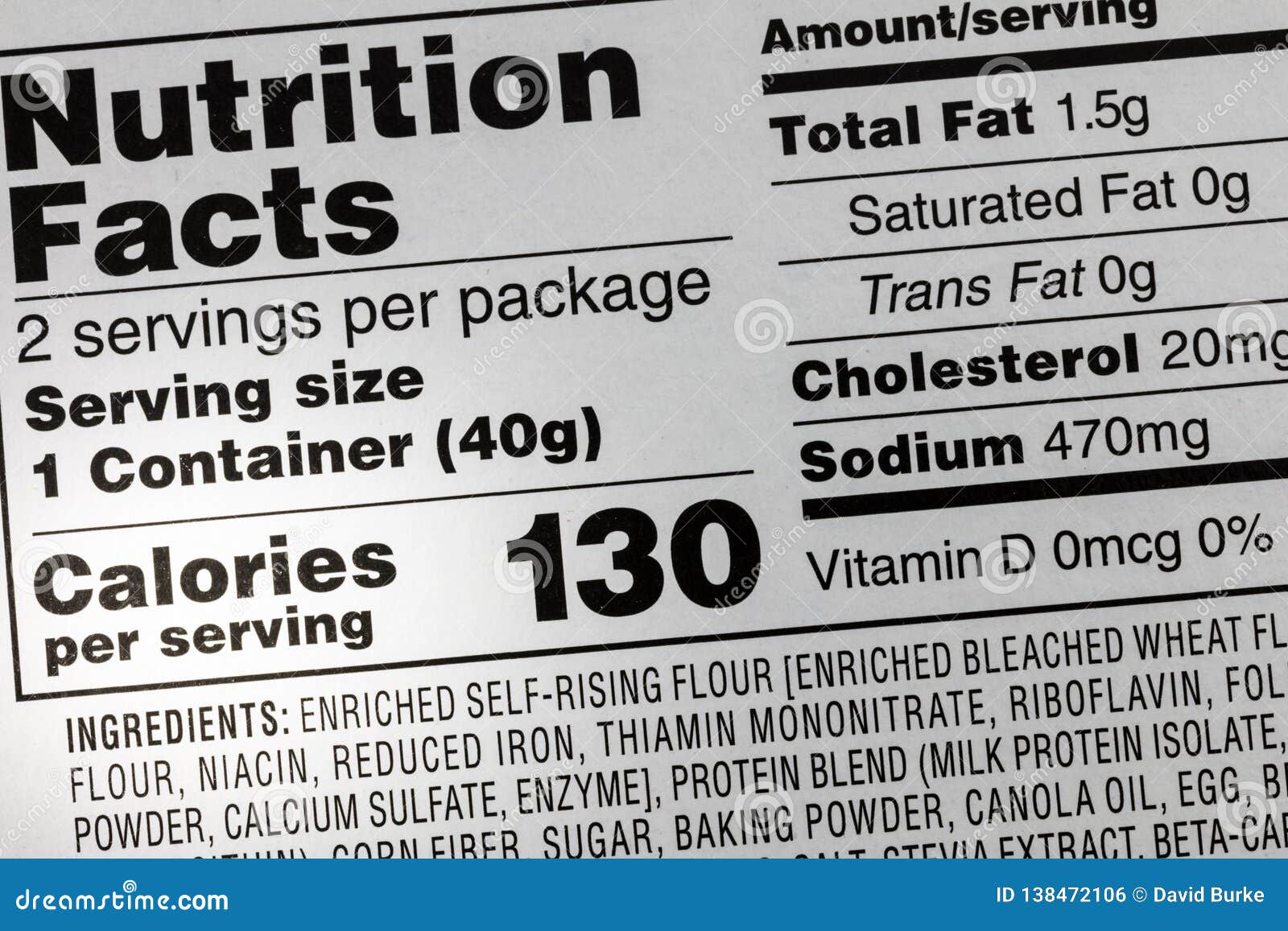
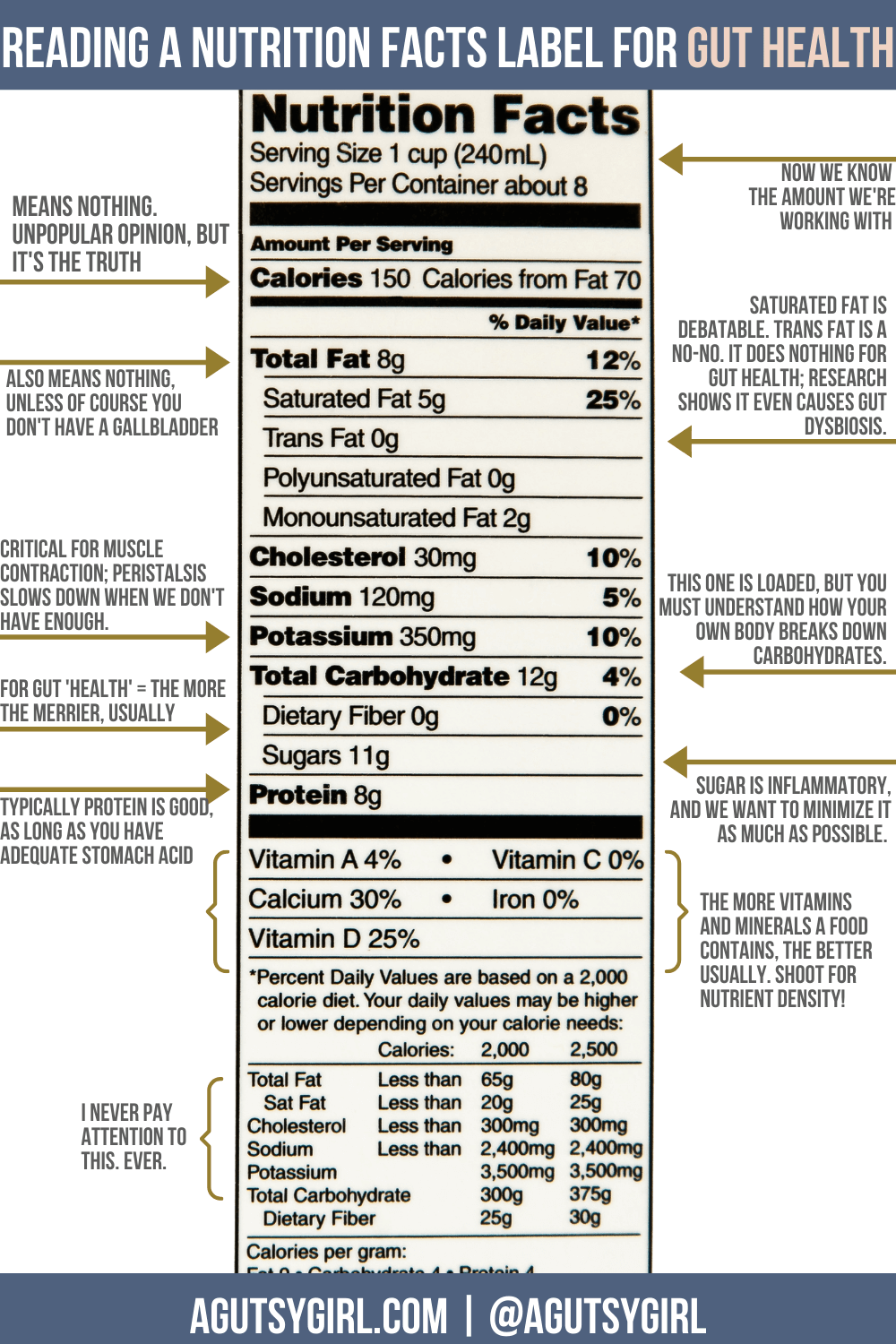











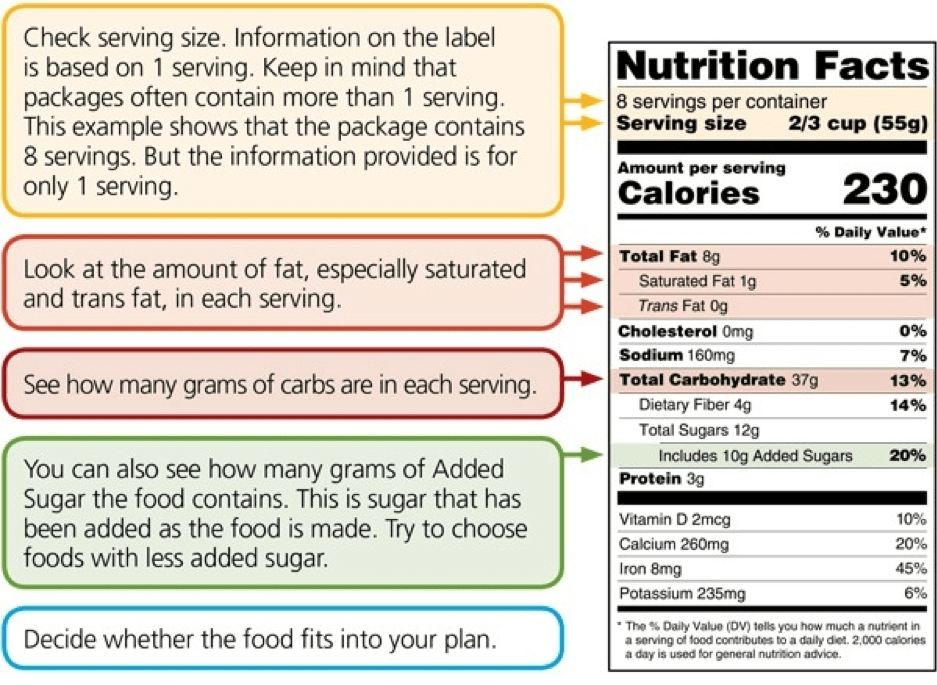

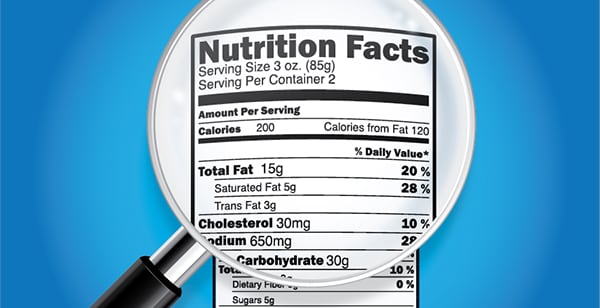
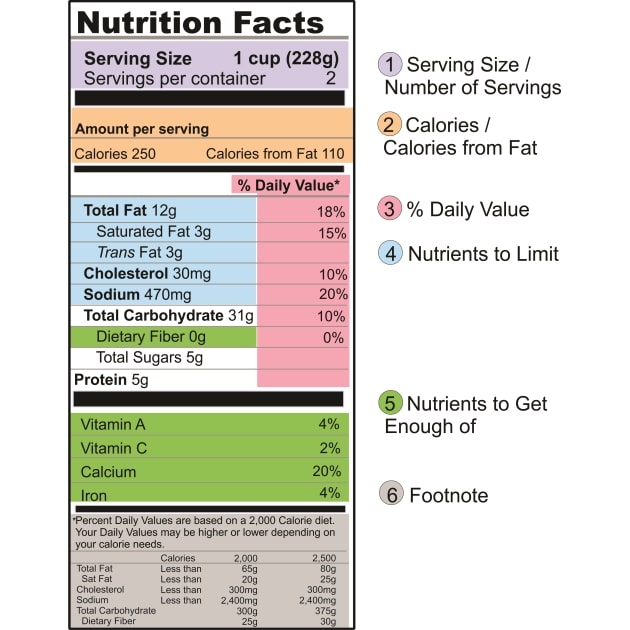


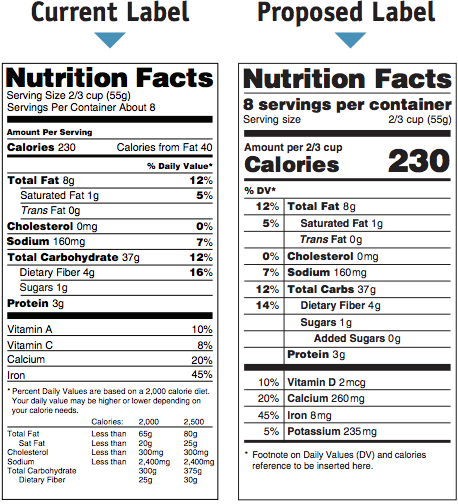


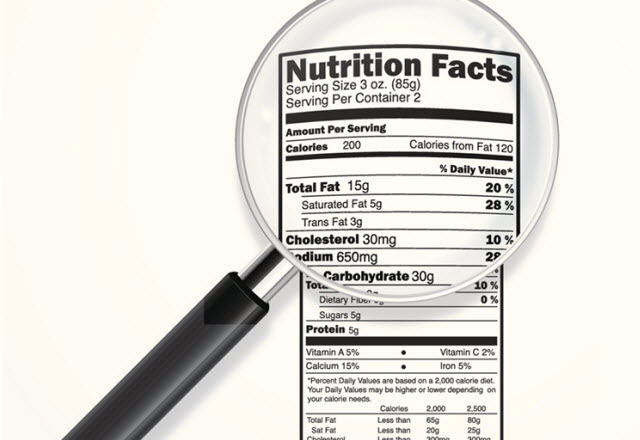
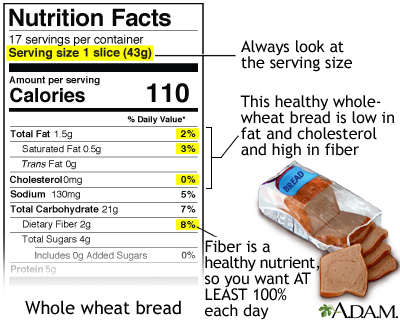
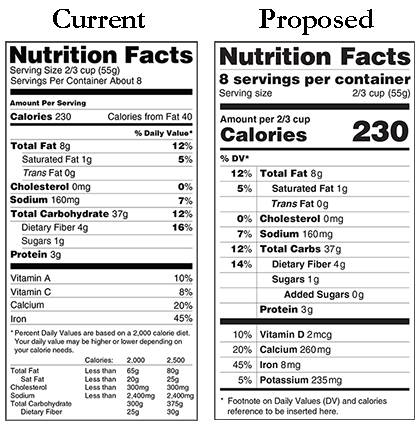



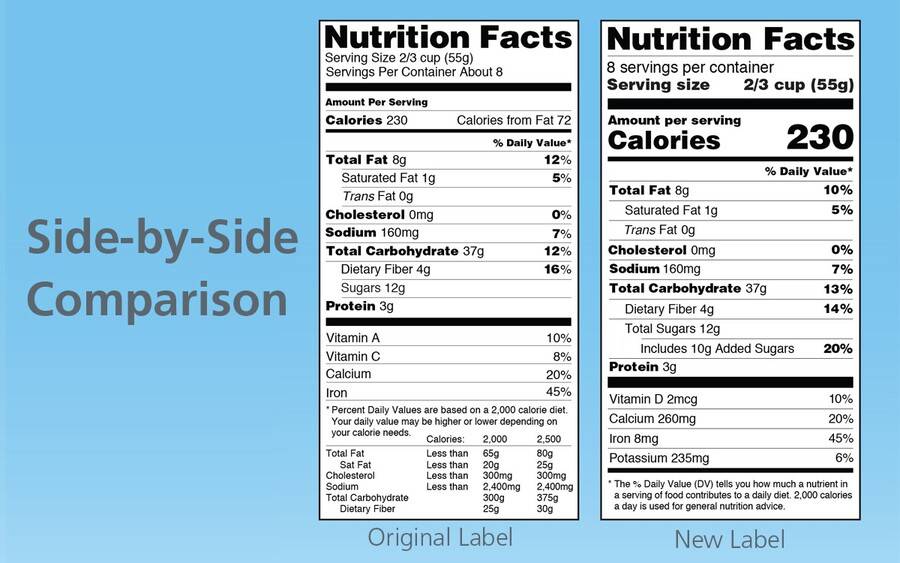


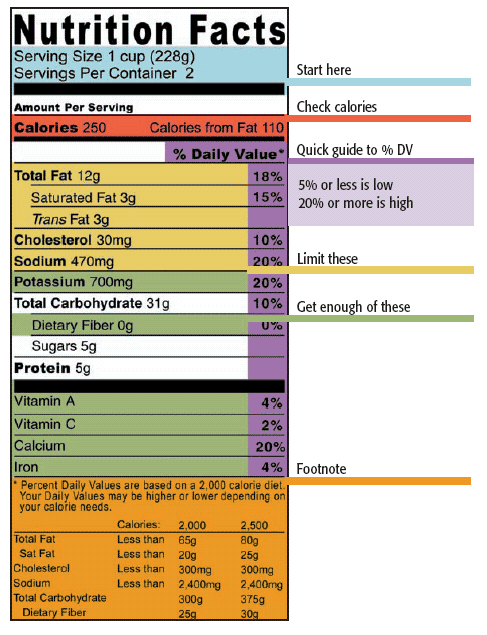



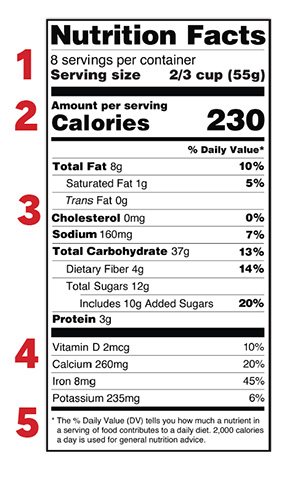

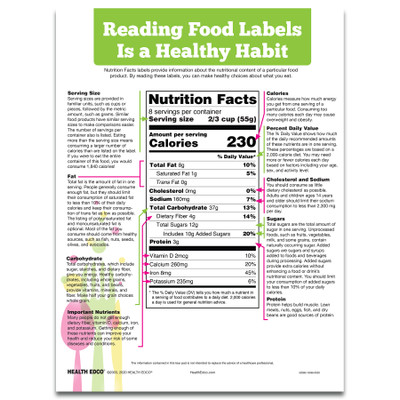
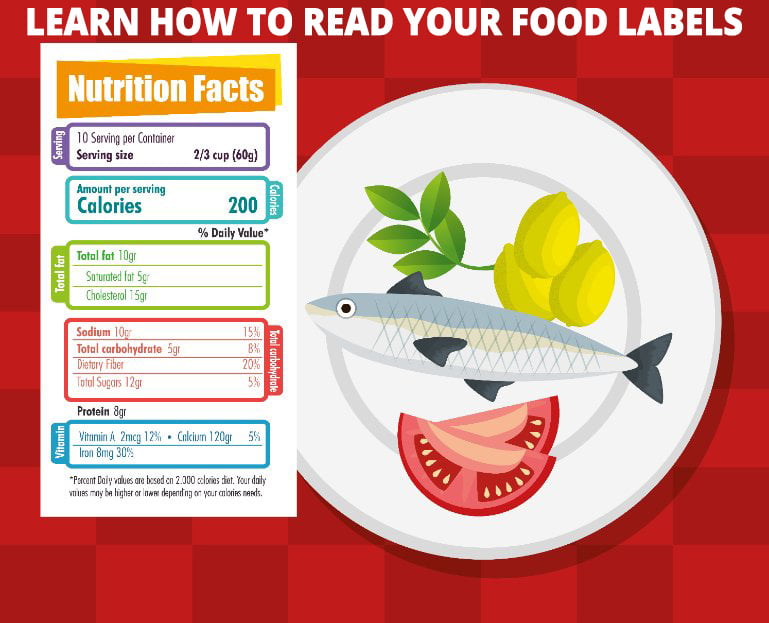


Post a Comment for "44 how to read nutrition food labels"